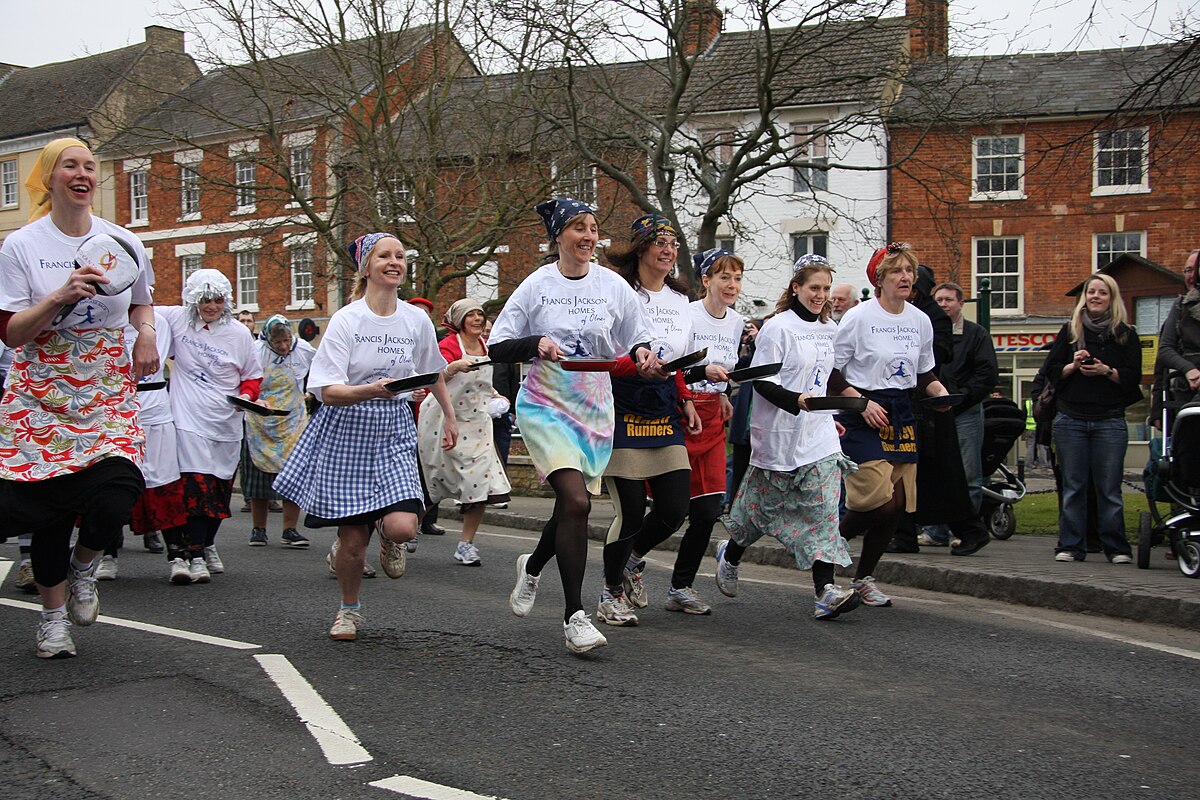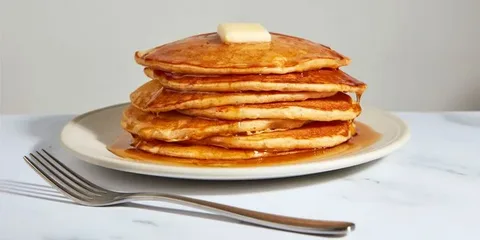Every year, Pancake Day serves up more than just fluffy, golden treats. It’s a day steeped in centuries-old traditions, Christian significance, and good old-fashioned fun. In 2025, the much-loved holiday returns, giving Britons—and pancake fans across the globe—a chance to indulge in their favorite toppings, test their flipping skills, and take part in a celebration with roots as rich as maple syrup.
Whether you’re a lemon-and-sugar purist or a Nutella aficionado, Pancake Day offers more than culinary delights. It’s a festival of heritage, community, and symbolism. So let’s explore when Pancake Day 2025 takes place, why we observe it, and the long history of this beloved pre-Lenten tradition.
When is Pancake Day 2025?
The Date of Pancake Day This Year
In 2025, Pancake Day—formally known as Shrove Tuesday—falls on March 4. The date changes every year because it’s tied to Easter, which is a movable feast based on the lunar calendar.
Shrove Tuesday always lands 47 days before Easter Sunday. Since Easter Sunday 2025 is on April 20, counting backward gives us March 4 for Shrove Tuesday. Mark it in your calendar now, because this year’s celebration promises to be as indulgent and festive as ever.
Why Does the Date Change?
Unlike fixed holidays such as Christmas, Shrove Tuesday shifts each year due to its link with Easter, which falls on the first Sunday after the first full moon following the spring equinox. This ancient method of dating, derived from ecclesiastical rules, means Pancake Day can occur anywhere between early February and mid-March.
What is Shrove Tuesday?
The Meaning Behind the Name
The word Shrove comes from the Old English term “shrive”, which means to confess one’s sins and receive absolution. In the Christian calendar, Shrove Tuesday was traditionally the final day to be “shriven” before the start of Lent—a 40-day period of fasting and reflection leading up to Easter.
Before Lent’s austerity, Christians would take part in a final feast, using up all the rich and perishable ingredients in their cupboards. That feast evolved into the modern pancake celebration, with pancakes becoming the star due to their simple recipe and symbolic ingredients.
The Connection to Lent
Shrove Tuesday marks the eve of Ash Wednesday, which is the first official day of Lent. Lent is a time of sacrifice and spiritual preparation, commemorating the 40 days Jesus spent fasting in the desert. As such, many Christians give up luxuries like sweets, alcohol, or meat during this period.
In preparation, families would traditionally use up ingredients such as eggs, butter, and sugar—items forbidden during Lent. Pancakes offered a delicious and efficient way to empty the pantry and enjoy one last indulgence before the fast began.
The Symbolism of Pancake Ingredients
Pancakes may seem simple, but their ingredients carry rich Christian symbolism:
- Flour represents the staff of life, or the foundation of human sustenance.
- Eggs symbolize creation and new beginnings.
- Milk reflects purity.
- Salt represents wholesomeness and preservation.
Together, they create not only a tasty meal but a spiritual metaphor—one that bridges the sacred with the everyday.
The Joy of Pancake Day Today
A Global Tradition Beyond Religion
Though rooted in Christian customs, Pancake Day has grown far beyond its liturgical origins. Today, it’s celebrated by people of all backgrounds as a fun, food-filled holiday. In Britain, it’s marked by pancake races, cook-offs, and kitchen experiments. Across the globe, it coincides with events like Mardi Gras in the United States and Carnival in various Latin cultures—festivals that all mark the final day of indulgence before Lent.
In this broader context, Pancake Day is as much a celebration of community and joy as it is of faith. Schools hold pancake flipping contests, offices host charity breakfasts, and families gather for homemade brunches. It’s an excuse to be festive, to be playful, and yes—to eat as many pancakes as your conscience allows.
A Brief History of Pancakes and Shrove Tuesday
Pancakes Through the Ages
The history of pancakes is as old as civilization itself. Ancient Greeks and Romans made early versions of pancakes using wheat flour, olive oil, honey, and curdled milk. In England, pancakes began appearing in cookbooks as early as 1439.
These early pancakes weren’t the towering stacks we know today. They were thinner and crispier—more akin to French crêpes or Italian crespelle. Over time, regional variations developed: fluffy buttermilk pancakes in North America, potato-based latkes in Jewish cuisine, and savory dosa in South Indian fare.
But what unites them all is their versatility—a quality that made them ideal for clearing out the pantry before Lent.
The Origin of Flipping Pancakes
The tradition of flipping pancakes on Shrove Tuesday has a long and slightly chaotic history. The most popular origin story dates back to 15th-century England, in the town of Olney, Buckinghamshire.
According to legend, a woman was so intent on making her pancakes that she lost track of time. Hearing the church bells ring for confession, she rushed out—pan in hand, apron still tied, flipping her pancake as she ran.
That tale birthed the Olney Pancake Race, a quirky but enduring custom. To this day, contestants in Olney don aprons and scarves and race through the town, flipping pancakes three times on the way to the church. The first to reach the finish line—and be greeted by the bell ringer—wins eternal local glory (and usually a prize pancake).
Why Do We Flip Pancakes?
The Function Meets the Festive
Aside from historical tales, flipping pancakes has practical roots. As the old rhyme from 1619’s Pasquil’s Palin suggests:
“And every man and maide doe take their turne,
And tosse their pancakes up for feare they burne.”
Flipping was a necessary cooking technique to ensure even browning. But on Shrove Tuesday, it evolved into a symbol of household participation and celebration. Everyone, from children to adults, took turns tossing the batter into the air, laughing when it missed the pan and cheering when it landed just right.
Today, that playful tradition lives on in schools, kitchens, and town centers across the UK and beyond.
How Pancake Day Is Celebrated Around the World
United Kingdom
In the UK, Pancake Day is a fixture on the cultural calendar. Beyond the flipping, families experiment with extravagant toppings—from strawberries and whipped cream to bananas and toffee sauce. Restaurants serve themed menus, and social media floods with videos of failed tosses and golden-brown triumphs.
Churches still ring the “pancake bell,” once used to summon parishioners to confession. It’s a rare blend of the sacred and the silly.
United States
In the U.S., Shrove Tuesday is more often known as Mardi Gras, French for “Fat Tuesday.” Cities like New Orleans explode into music, dancing, and parades. Beads, costumes, and indulgent foods like King Cake dominate the day.
Though pancakes aren’t the centerpiece, the spirit of indulgence remains the same.
France and Belgium
In France and Belgium, crêpes are the pancake of choice. Thinner, more delicate, and often filled with jam or Nutella, they reflect a different culinary tradition with the same religious roots.
Families often make a wish while flipping the crêpe, holding a coin in the other hand for good luck.
Nordic Countries
In Scandinavian countries like Sweden and Finland, Semla buns—cardamom-scented pastries filled with almond paste and cream—are the pre-Lenten treat. Pancakes may appear, but these buttery, decadent buns are the star of the show.
Pancake Day Essentials: What You Need
The Perfect Pancake Batter
To make classic English pancakes, you’ll need:
- 100g plain flour
- 2 large eggs
- 300ml milk
- 1 tbsp oil or melted butter
- Pinch of salt
Whisk all the ingredients into a smooth batter and let it rest for 20–30 minutes before frying in a hot, lightly oiled pan.
Toppings: Classic vs. Creative
Traditionalists swear by lemon juice and sugar, a combination that balances sweet and tart. But the modern pancake fan isn’t afraid to venture further:
- Fresh berries and whipped cream
- Maple syrup and crispy bacon
- Chocolate spread and banana slices
- Savory toppings like spinach, cheese, and mushrooms
There’s no wrong answer. If it fits on a pancake, it belongs there.
Final Thoughts: Pancake Day as a Celebration of Community
At its heart, Pancake Day is about more than batter and sugar. It’s about sharing, ritual, and renewal. Whether you’re observing Lent or simply craving a treat, it’s a time to gather, to reflect, and to laugh at your most ambitious flipping fails.
In 2025, as Pancake Day rolls around on March 4, consider not just what you’ll eat, but what the day represents. A bridge between the festive and the solemn, between old customs and new creativity. A celebration that’s as meaningful as it is mouthwatering.
So dust off your frying pan, line up your toppings, and get ready to toss—with heart, with history, and maybe even with a little flour on your shirt.
- Sheffield United vs Sunderland LIVE: Championship play-off final result, match stream and latest updates toda - June 5, 2025
- Tulsi Gabbard Net Worth - June 5, 2025
- Explore New Mexico’s THC Infused Beverages - June 5, 2025






